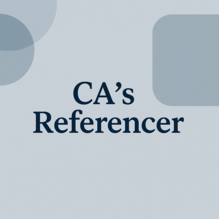PwC expects end-to-end AI audit automation within 2026
October 28, 2025
Big Four firm PwC estimates that, at the rate it's developing new solutions for its audit professionals, complete end-to-end integration of AI in the audit cycle is about one year away.
During a briefing at the firm's New York office, Shawn Panson, U.S. assurance transformation leader, said end-to-end AI-driven automation should be expected sometime within calendar year 2026. There already is, or soon will be, a tool for every step of the audit process, from planning to risk assessment to walkthrough to evidence collection to testing to, finally, financial statement review and tie-out. Ultimately the firm hopes these tools will help both audit efficiency and quality.
PwC professionals already have a tool for audit planning, Simplified Audit for Private Business, which he said "essentially helps the planning part of the audit" by ingesting prior year information and auto-populating a planning document that can be used as a foundation for considering a process's compliance with AICPA standards. He said it saves time and enables auditors to ask better questions as they will better understand the changes that took place in a business since the last audit. It is specifically designed for auditors working with private company clients undergoing AICPA audits, versus public companies. This is the first year PwC auditors are using this tool as part of their planning.
He added that PwC plans to soon have a tool for the next step in the process, risk assessment, which will help people make smarter decisions about what is and is not scoped in the audit.
PwC already has an Advanced Walkthrough Assistant, which uploads relevant information, including prior year walkthroughs and current year documentation, then analyzes it to generate a tailored work plan, highlight if anything is missing or changed from last year, capture key documentation of controls and risk and generating documentation for review. Jennifer Kosar, AI assurance leader at PwC US, noted this has traditionally been one of the more tedious parts of the audit process.
"In large global organizations, [it's] actually quite challenging to follow a transaction from inception to recording," she said. "What you can probably imagine is people would ask, 'Why do I have to do it every year?' Things don't change that much in large organizations in terms of how things work, but we are required to do so, in fact, to determine that things have not changed."
Panson said PwC also expects to have solutions for automated controls testing that will operate similarly to their current software for evidence matching, called Evidence Match.
Kyle Maryanski, PwC U.S.'s assurance partner and next generation audit leader, explained Evidence Match is an agent-led audit module that automatically extracts matching and validating evidence against documents. Integration with the assurance skills library allows the software to support testing in high-volume areas such as cash, accounts receivable and accounts payable. Each match includes a clear evidence trail and everything is documented and organized.
Maryanski noted that this tool was designed for the way audits usually go in the field.
"We had to build this not just to ingest a PDF. We had to ingest 20 different kinds of documents. The client may hand you a napkin! We had to build these tools to fit the masses, what our clients do and the way we perform. That's some of the challenges for building these well and building them right. [But] we've seen the confidence [is] there," he said.
Panson said PwC is also planning to equip its auditors with tools to guide the financial statement review and tie-out portion of the process. Right now, the firm has a tool called Audit Innovation Hub that is currently being tested with certain asset and wealth management engagement teams, though they plan to expand the pilot in the near future. The tool automates and streamlines auditing tasks related to the financial statement tie-outs and various testing procedures related to non-registered fund-to-fund audits conducted under AICPA auditing standards. The platform automates certain portions of audit procedures by extracting, organizing and testing financial data and documents.
"For calendar '26, that is our hope," he said. "We have work to do, but you can see how it all comes together for '26 in an integrated fashion." He added that the tools will then be built into "one global new agentic platform for all our practitioners across PwC and global assurance, which we expect to have our within the next year and a half after that."
The increasingly AI-driven approach to auditing has begun shifting what PwC looks for in entry-level hires. Panson hopes accountants will walk a dual path of both CPA and data science or computer science, in addition to the hires that come purely from the tech and engineering world.
"We're definitely looking for different skills, as well as engineers that we're now hiring that we would have never hired into the assurance practice before," said Panson. "Not all those people will definitely be dual-track CPAs, but we're certainly looking for more of the dual track so people can serve both those purposes. I think it's early days, but we're certainly starting to see a shift."
[Accounting Today]


